Firefighting is a mentally and physically demanding profession that requires a high level of training and preparation. The training process of becoming a firefighter can vary depending on the specific requirements of the fire station or the fire department, but it typically involves a classroom discussion and hands-on training.
The physical demands of fireman training
Physical fitness is an integral aspect of firefighter training. Firefighters must be in excellent physical condition to respond to emergencies, lift heavy equipment, and perform other physically-demanding tasks.
Their physical conditioning includes rigorous physical tests, such as running, lifting weights, and practicing with the fire engine and firefighting equipment.
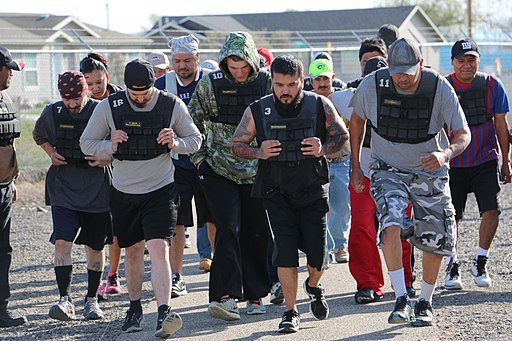
Proving their readiness for the challenge: Emergency firefighters undergo a pack test to assess their physical fitness for fighting wildfires.
Firefighters also undergo extensive classroom instruction in various areas, including fire science, emergency services, and hazardous materials management. They may also receive specialized training as an emergency medical technician. EMT training can be obtained through specialized schools or programs, such as a paramedic school or a fire academy offering EMT certification.
Depending on the specific requirements of their job, firefighters may need this type of specialized training to be eligible for employment with a public safety agency, a volunteer fire department, or other organizations.
The mental demands of fireman training
The mental demands of firefighter training are just as important as the physical demands, as firefighters must be able to handle high-stress situations and make quick and accurate decisions under pressure.
Understanding and developing the following skills are crucial for those considering a firefighting career, as they will be essential for handling the challenges of the job.
1. Decision-making skills
Firefighters must possess the ability to make fast and informed decisions when a critical situation arises.
2. Stress management
Firefighters must be able to handle the physical and emotional demands of the job, including responding to emergencies and dealing with potentially traumatic situations. They must be able to maintain a calm and composed demeanor under pressure.
3. Communication skills
Firefighters must possess strong communication skills to effectively communicate with their team and the public. This skill includes being able to provide clear instructions and updates, as well as being able to listen and understand the needs and concerns of others.
4. Emotional intelligence
Firefighters must understand and respond to the emotions of those around them, including those they are trying to help. This skill requires strong emotional intelligence and the ability to empathize with others.
5. Adaptability
Firefighters must be able to adapt to changing situations and work effectively in a variety of environments. This skill includes handling unexpected challenges and thinking creatively to find solutions.
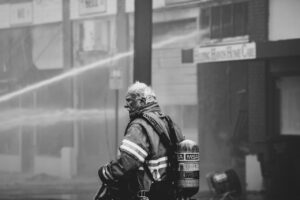
A firefighter takes a moment to catch his breath, showing the physical and mental toll that fighting fires can take.
The rewards of fireman training
1. Personal growth and development
Firefighter training can provide an opportunity for personal growth and development, as it requires individuals to push themselves physically and mentally to succeed. The training process can help individuals build confidence, discipline, and a sense of accomplishment.
2. Job security
Firefighting is a vital and necessary profession, and as such, there is typically a high demand for skilled firefighters. This profession can provide job security and the opportunity to have a stable and rewarding career.
3. Competitive compensation
Many fire departments offer competitive compensation packages, including salaries, benefits, and opportunities for advancement.
4. The opportunity to serve the community
Firefighters have the chance to impact the communities they help, and the satisfaction comes with knowing that they are helping keep people safe.
5. The sense of camaraderie and brotherhood among firefighters
Firefighting can be a team-oriented profession, and many firefighters develop strong bonds with their colleagues.
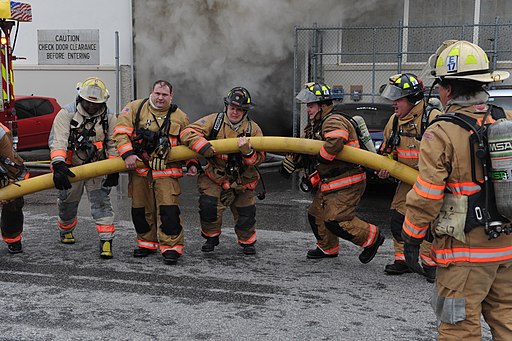
Putting out the flames: Firefighters work tirelessly to extinguish a warehouse fire at the defense distribution depot at Naval Station Norfolk.
How to become a firefighter
To become a firefighter, you must typically meet specific requirements and undergo firefighter training. These requirements may vary by the fire department, but common ones include the following:
- High school diploma or equivalent: Most fire departments require applicants to have a high school diploma or equivalent.
- Valid driver’s license: Most departments require a valid driver’s license to operate firefighting vehicles.
- Physical ability test: Many fire departments require applicants to pass a physical ability test to ensure they are physically fit enough to perform the duties of a firefighter.
- Fire technology classes: Some fire departments may require applicants to have completed fire technology classes or have a degree in fire science.
- Fire academy training: To become a firefighter, you will typically need to complete fire academy training, which is a comprehensive program that covers all aspects of firefighting. A fire department or fire service may offer this training or be conducted at a local community college.
- Background check: This is typically done by most fire academies as part of the application process. It is meant to ensure that those who are accepted into the academy and eventually become firefighters do not have a criminal background.
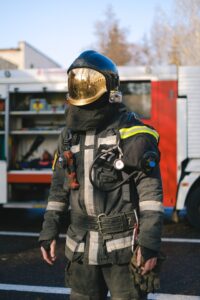
A firefighter stands ready in full gear.
Once you have met the requirements and completed firefighter training, the next step in becoming a firefighter is the hiring process. This process can vary by fire department but generally involves submitting an application and undergoing an interview.
Most departments may also require applicants to undergo a testing process, which is a written or oral exam. It’s important to read and follow all instructions for the hiring process carefully, as competition for firefighter positions can be fierce. It may also be helpful to research a local fire department or fire service you are applying to. You can better understand their values and priorities, which helps you tailor your application to fit their needs better.
Ultimately, the firefighter hiring process is an essential step in your journey to becoming a firefighter. So it’s worth putting in the effort to make a strong impression and stand out from other candidates.
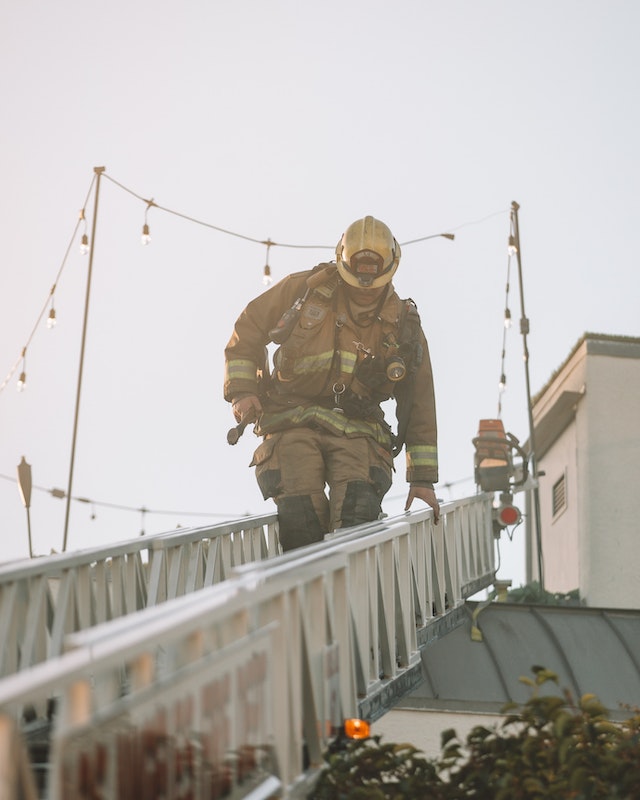
A firefighter carefully makes their way down a ladder.
To answer the question, Is fireman training hard? Yes, fireman training is a challenging and demanding process.
Former FDNY Chief Edward Croker once said: “When a man becomes a fireman, his greatest act of bravery has been accomplished. What he does after that is all in the line of work.” Becoming a firefighter is not for the faint of heart. It requires a strong commitment to serving the community and being able to handle high-pressure situations with bravery and calmness. It is a testament to the dedication and courage of those pursuing a firefighting career.


